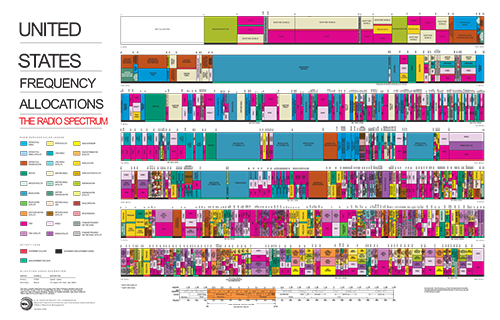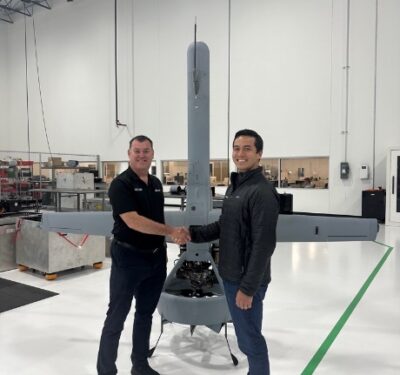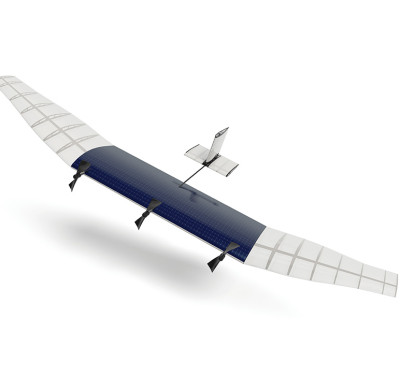
U.S. frequency allocation chart as of October 2003 / Courtesy of The National Telecommunications and Information Administration, U.S. Dept. of Commerce.
The Department of Agriculture (USDA) is studying what spectrum is needed now and in the future to support technologies used in agriculture, forestry, mining, and rural manufacturing. The agency is looking in particular at potential applications in commercial agriculture and is specifically asking for feedback on spectrum needs for unmanned aircraft.
Though the uses for wireless communication continue to expand the radio frequencies on which such services are built are in high demand and exceptionally crowded. Though technological innovations are enabling more and more users to share the airwaves the use of frequencies must be coordinated and licensed to prevent interference. As the number of applications and users grows it is increasingly hard to find more frequencies for emerging technologies like unmanned aircraft and precision agriculture.
The Farm Service Agency (FSA), which is part of USDA, is asking about current and emerging needs, including expected growth, and which frequencies are expected to be used. The agency also wants to know about creating flexible models for spectrum management including incentives, standards, and enforcement mechanisms.
With regard to drones the agency wants a better understanding of the current and anticipated uses of traditional manned aircraft and unmanned aircraft systems (UAS) to support the industries mentioned, the economic benefits of UAS and how the need for spectrum for control and data transmission will impact rural spectrum demand. USDA asks if it would be beneficial or detrimental to allocate portions of the spectrum to be designated for licensed commercial and government UAS activities. If so, what would the benefits or drawbacks be for licensed operations rather than currently largely unlicensed UAS activities?
The USDA is doing the research to support a report to the National Telecommunications and Information Administrationon anticipated future spectrum requirements. The information will also go to the White House’s Office of Science and Technology Policy (OSTP),which is looking at emerging technologies in rural settings and their expected impact on non-federal spectrum demand. OSTP is also supposed to provide recommendations for research and development priorities that advance spectrum access and efficiency. All of this is part of a broader effort to develop a long-term National Spectrum Strategy.
The docket Comments are due on or before 5 p.m. Eastern Daylight Time on April 1, 2019.More information can be found on regulations.gov. Search on the document number, which is 2019-04540.






